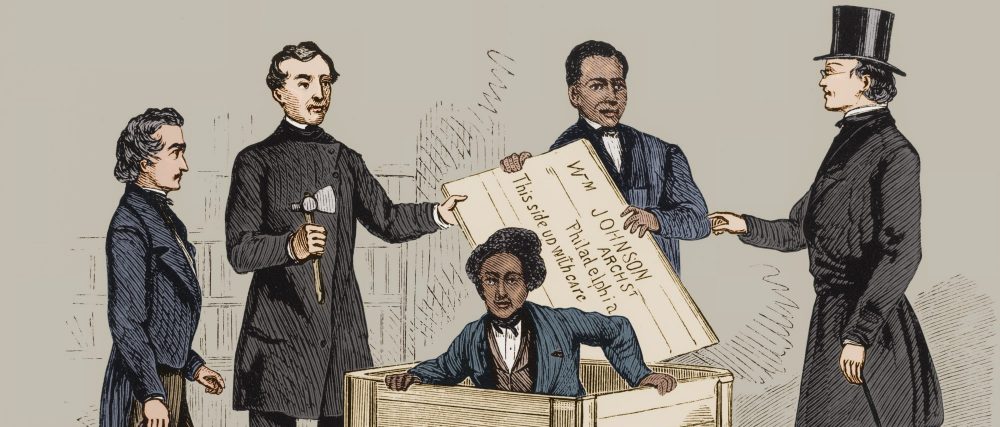Stage 1: Paper due April 29 // Stage 2: Website due May 9
Objective
By Thursday, May 9, 2019, students will be required to build an online multi-media exhibit analyzing an eighteenth- or nineteenth-century Dickinsonian with connections to slavery or antislavery. The first graded stage of the project will be an 8- to 10-page biographical paper due by Friday, April 26. This paper should be submitted by email and include a descriptive title page and Chicago-style footnotes. Students should build their online exhibits in the free platform Weebly and email a public URL to Prof. Pinsker by May 9th. Final website exhibit should incorporate revised text from initial papers as well as introduce various new content and multi-media elements, such as self-produced slideshows, maps, timelines, videos or podcasts. Late exhibits will be penalized up to 5 points per day.
Main Guidelines –Papers (Monday, April 29 –REVISED)
- By Wednesday, April 17 [revised], students will email Prof. Pinsker with an outline of their plans to study an eighteenth- or nineteenth-century Dickinsonian with connections to slavery or antislavery. Students will find many promising leads at the Dickinson & Slavery website. Some students may also choose to focus on a historical figure from outside the college with connections to American slavery or anti-slavery.
- By Monday, April 29 [revised], students will submit an 8 to 10-page biographical paper on an approved subject. Papers should be submitted by email and include a descriptive title page and Chicago-style footnotes. Bibliographies are not required.
- This paper will count for one-third of the final exhibit grade (or 10% of the course grade).Papers will be evaluated on the basis of their research effort, analysis and prose quality. Late papers will be penalized up to 5 points per day.
- Organize the biographical paper as a traditional research paper with an interpretive thesis statement (defining the subject’s significance to the study of slavery or antislavery), using third person narration, and with the usual mix of primary and secondary sources. Summarize the entire subject’s life, but don’t turn the paper into an obituary or encyclopedia entry.
Main Guidelines –Websites (Friday, May 9)
- Web exhibits are different than papers. They have a different, non-linear structure and can organize themselves around either an interpretive thesis or an essential question. Student Weebly sites should build from the biographical paper and should incorporate significant chunks of revised text, but in a different, more digital-friendly format. The purpose of the project now has shifted toward creating a learning environment. The best websites will provide well-researched and well-produced content designed to help classroom teachers and students understand the rise and fall of American slavery.
- All text content should be original, but students may use some images and multi-media elements developed by external sources, as long as these elements are clearly labeled (e.g. Abraham Lincoln, 1847) and properly credited (e.g. “Courtesy of Library of Congress). For text content, students should continue use Chicago-style footnotes for any required citations.
- This exhibit will count for two-thirds of the final exhibit grade (or 20% of the overall course grade).
Model Outline
I. Introduction (Striking quotation or narrative vignette + thesis statement)
II. Background & Context (biographical and chronological)
III. Case Study (Effective use of primary & secondary sources)
IV. Analysis (persuasive writing, explaining significance)
V. Conclusion (Return and refine opening analysis)
Featured Tutorial –Weebly
Models
- The best student-designed web exhibits keep the design elements simple, while demonstrating careful attention to content details and deliberate thinking about how classroom audiences will navigate the site. Check out some of these successful models from other courses:
- Indian Wars: Discovering Joshua Lippincott (Amanda Donoghue)
- WWI: Fiery Baptism at Little Gibraltar (Tom Forte)
- WWII: Battle of Peleliu (Sam Lorenzo)
- Civil War: Mary Dillon’s Carlisle (Rachel Morgan)
- Benjamin Rush: Ties to Slavery (Rachel Morgan)
- WWII: Operation Husky (Rachel Morgan)
- Thomas Cooper & Slavery (Becca Stout)
- Vietnam: My Lai Massacre (Maria Villottti)
- Richard McAllister: Fugitive Slave Commissioner (Cooper Wingert)
Special Reminders
- Always include a brief About section that provides information about the author and also about the project’s objectives and its intended audience
- Students may receive significant technical assistance on multi-media elements, including even help with manning cameras or supervising audio / video editing production, but they should acknowledge all such help.
- Make sure your site is published to the web but discourage search engines from indexing in order to protect your privacy.
- Please take care to use public domain multi-media components and to follow fair use guidelines in regard to copyrighted materials.
- Make sure to communicate with Prof. Pinsker by email if you are in danger of missing the deadline.
Additional Tutorials
